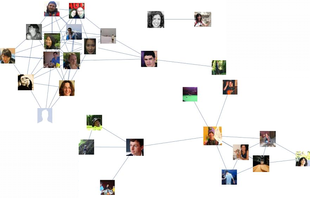|
|
| Line 37: |
Line 37: |
|
|
|
|
|
*Checking if two graphs are isomorphic is a hard problem |
|
*Checking if two graphs are isomorphic is a hard problem |
|
|
|
|
|
|
|
|
|
|
|
== Scanned Lecture Note for September 17 == |
|
== Scanned Lecture Note for September 17 == |
Revision as of 13:44, 19 September 2015
| Welcome to Math 344!
|
| Edits to the Math 344 web sites no longer count for the purpose of good deed points.
|
| #
|
Week of...
|
Notes and Links
|
| 1
|
Sep 14
|
About This Class, Day One Handout, Tuesday, Hour 3 Handout, Thursday, Tutorial 1 Handout
|
| 2
|
Sep 21
|
Tuesday, Tutorial 2 Page 1, Tutorial 2 Page 2, Thursday, HW1
|
| 3
|
Sep 28
|
Tuesday, Class Photo, Tutorial 3 Page 1, Tutorial 3 Page 2, Thursday, HW2
|
| 4
|
Oct 5
|
Tuesday, Drawing  -cubes, Thursday, HW3 -cubes, Thursday, HW3
|
| 5
|
Oct 12
|
Tuesday, Tutorial Handout, Thursday, HW4
|
| 6
|
Oct 19
|
Tuesday, Tutorial Handout, Thursday
|
| 7
|
Oct 26
|
Term Test on Tuesday, Dijkstra Handout,Thursday,HW5
|
| 8
|
Nov 2
|
Tuesday, Tutorial Handout, Thursday, HW6, Sunday November 8 is the last day to drop this class
|
| 9
|
Nov 9
|
Monday-Tuesday is UofT Fall Break, Thursday, HW7
|
| 10
|
Nov 16
|
Tuesday, Thursday, HW8
|
| 11
|
Nov 23
|
Tuesday, Thursday, HW9
|
| 12
|
Nov 30
|
Tuesday, Thursday, HW10
|
| 13
|
Dec 7
|
Tuesday, FibonacciFormula.pdf, semester ends on Wednesday - no class Thursday
|
| F
|
Dec 11-22
|
The Final Exam
|
| Register of Good Deeds
|

Add your name / see who's in!
|

|
|
Lecture Notes for September 17
DEFINITION 7 Isomorphism A graph  is called isomorphic to a graph
is called isomorphic to a graph  whenever
there exists a bijection
whenever
there exists a bijection  such that
such that  we have
we have  if and
only if
if and
only if  .
.  means they are isomorphic to each other.
means they are isomorphic to each other.
- Isomorphism does not mean two things are identical but means they are mathematically the same.
The relationship of isomorphisms:
1. Reflexive:  A graph is isomorphic to itself
A graph is isomorphic to itself
2. Symmetric:  In other words, for every
In other words, for every  we have
we have

3. Transitive: 
CLAIM If two graphs are isomorphic, then they have:
1. same number of vertices
2. same number of edges
3. vertex degrees (valencies) are the same between the two. For example, if one graph has 3 vertices of degree 2, and 2 vertices of degree 1,
then the other graph should have the same
4. same number of subgraphs
5. same number of complements denoted by 
- Complement means

DEFINITION 8 Subgraph A subgraph of a graph  is a graph
is a graph  such that
such that  and
and
 .
.
- Checking if two graphs are isomorphic is a hard problem
Scanned Lecture Note for September 17
Answers of sample question




















